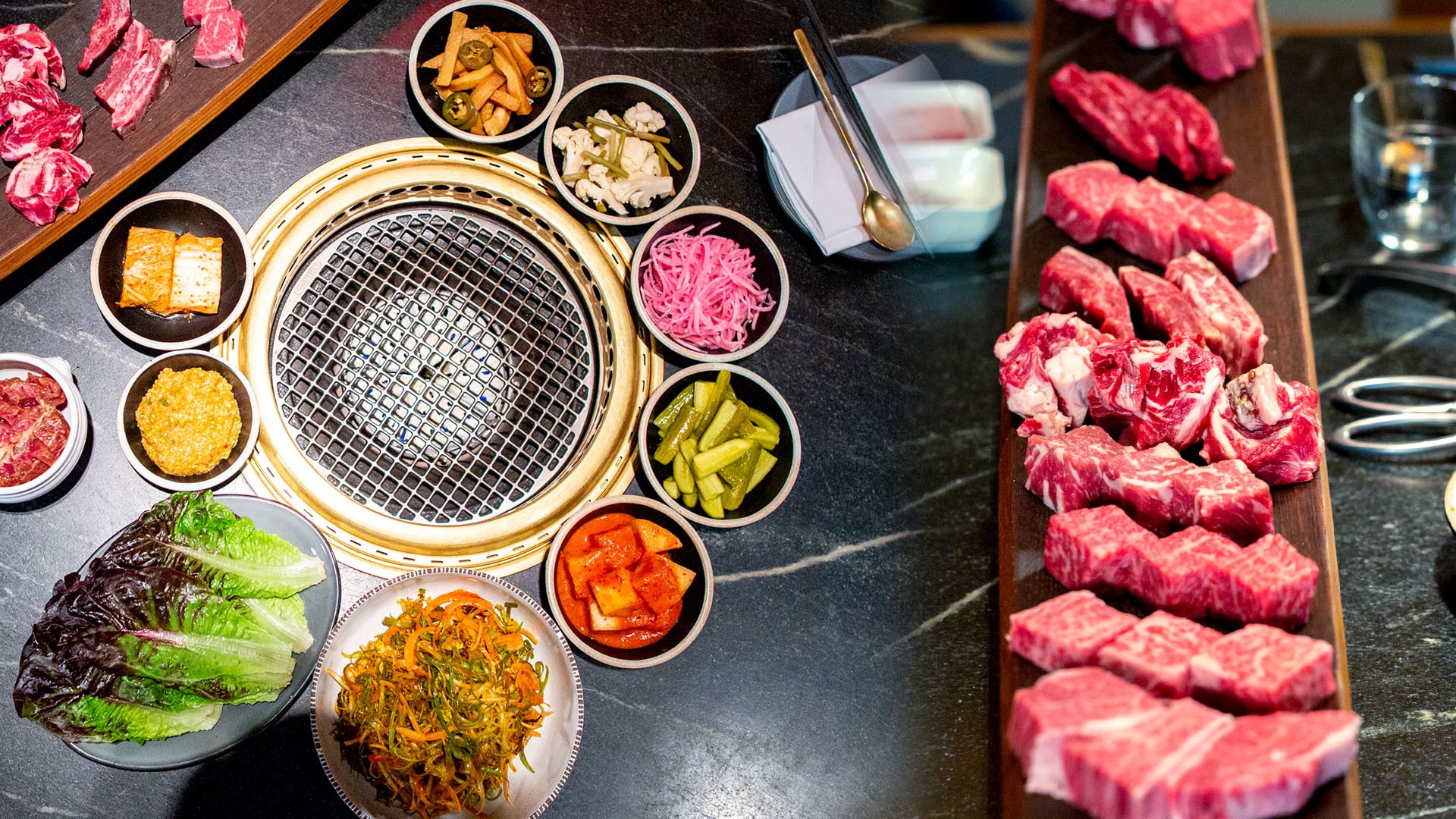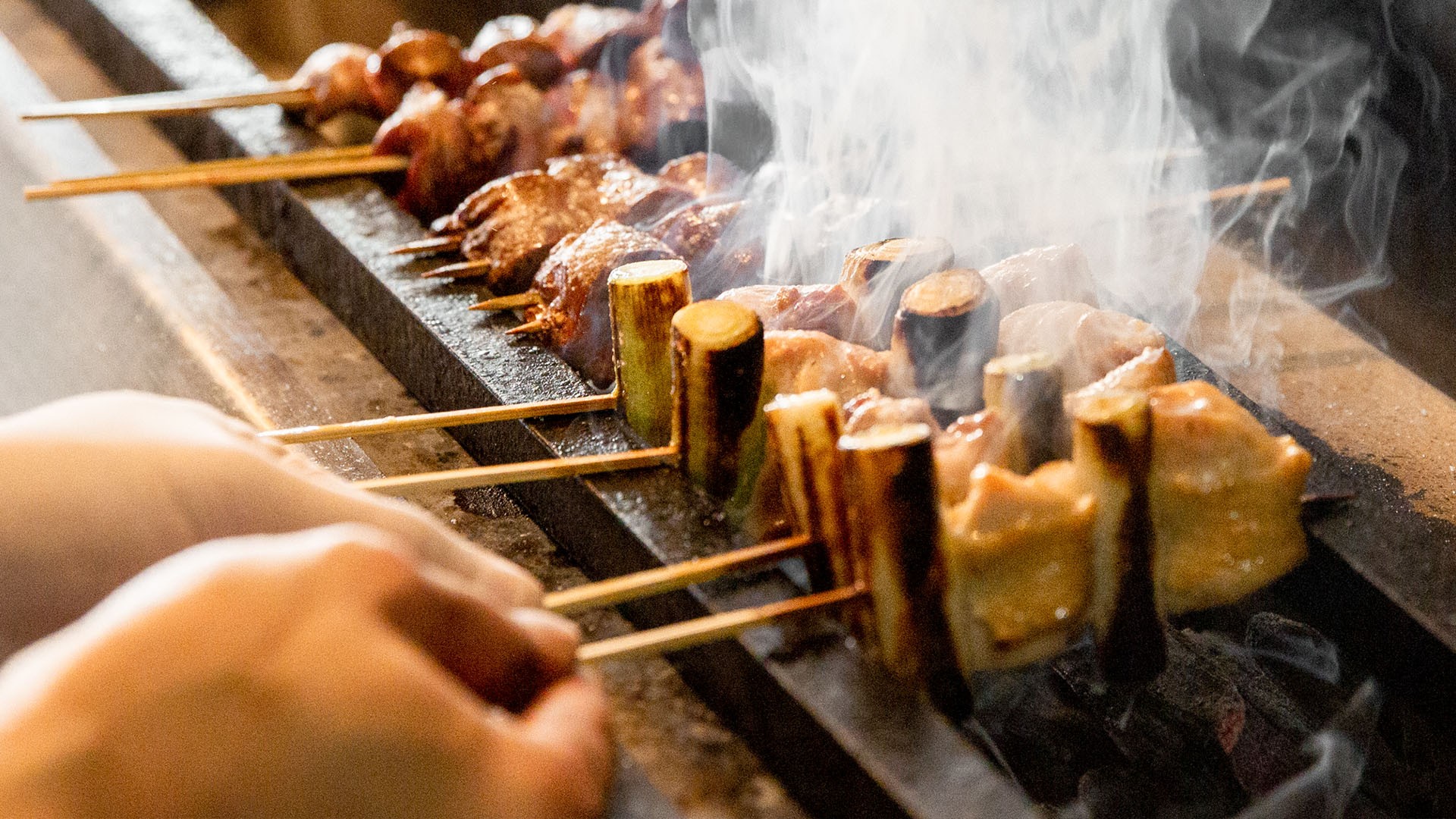For 13 years, chef Yoshiteru Ikegawa has run Tokyo's Torishiki, where he serves omakase-style grilled chicken that has earned him the title as the "world's greatest yakitori chicken master." With only 17 seats, Torishiki is small and notoriously hard to book, but with the opening of his New York City outpost Torien last week, Ikegawa is hoping to sway a bigger audience on his omakase yakitori. Here's why we should be paying attention.
Advertisement
This conversation was conducted through a translator and has been edited and condensed for clarity.***When I was in elementary school, I would always pass this alley of lots of little markets on the way back home from school. Yakitori was one of the street foods in that alley, and it smelled so good. I used to buy a few skewers and take them home to eat. When I went home and ate the yakitori, of course it tasted good, but it didn't have the aroma I experienced in the alley. It was then that I noticed that the charcoal you use to grill is a very important element to bring the beauty of yakitori.When everybody else wanted to become a fireman or a baseball player, I already wanted to become a yakitori chef. Even when I went to university, I was always thinking about how to [do it]. I was already committed, and I knew that was what I wanted to do my whole life.After graduating from university, I thought that to become a chef, I had to know how the guests will see me. Instead of going to a restaurant right away, I worked as a salesman. I studied how people react and what makes people happy. At that time, lots of chefs in Japan, they were the boss. Everybody was almost scared of the chef and I didn't like that. That's why I started from the bottom—the salesman being shut out.Meanwhile, I went to more than 100 yakitori places in Tokyo and I finally found one place that I liked. I fell in love with that concept and I studied there for seven years under the chefs.
Advertisement

Just like sushi, you start with something light and go toward something more rich, something more fatty. The toppings and accompaniments are seasonal vegetables, and the skewers vary with each season. With the chicken, there's a skinny season and a fatty season, so depending on that, I'll change the order of how I select the skewers. At this moment in the United States, I don't think people have the experience seeing different parts of the chicken in yakitori. My mission is to show them the beauty of the chicken.From separating all the parts of the chicken with specific cuts, we can bring out the flavor and characteristics of each part of the meat. How each part cooks is different, so when I put the meat on the skewer, I calculate the thickness and the angle and everything so the chicken will taste the best. It takes a chef who knows everything about the chicken and everything about the grilling [process].Another part that I love about dining omakase style is the counter seating. The chef can see the guest's face; I'm grilling and I'm looking at the guest for the perfect time to put the skewer on the plate. By doing that, the space unites; the kitchen and the customer's side are in one unit. It's about the full dining experience.When you mention yakitori, I want people to know that omakase is the best way to [enjoy it]. Omakase sushi has been known in Japan forever, but in the US, it's just the last ten years that people have understood that as the best way to eat it. It just takes time, but eventually, people in America will understand that the best yakitori is omakase style.

